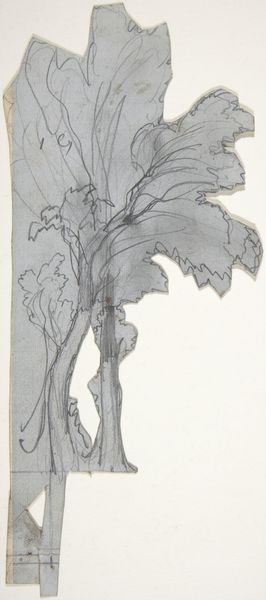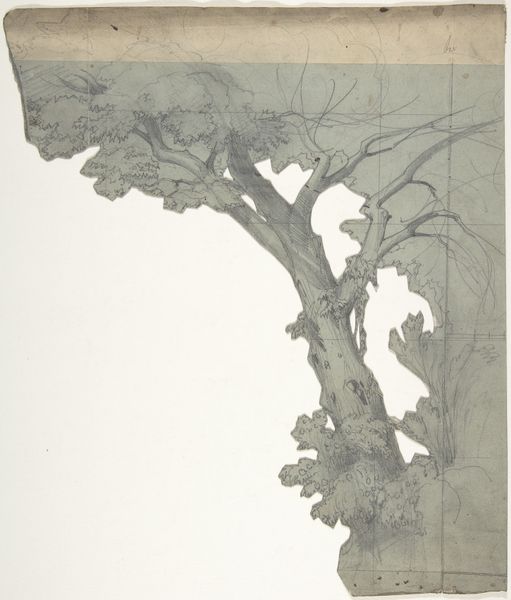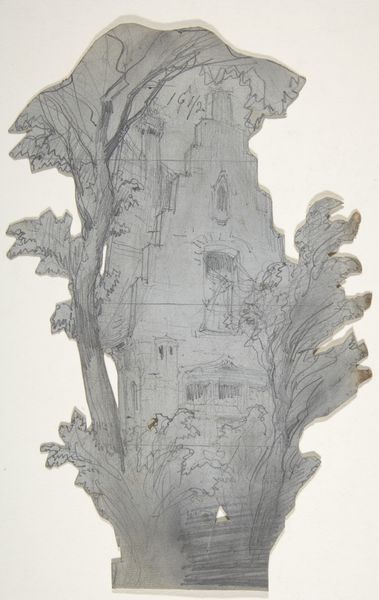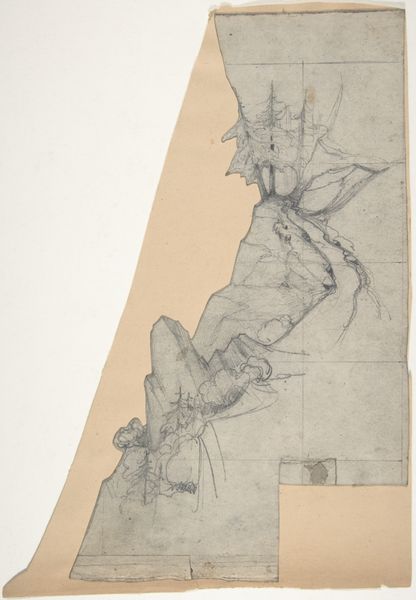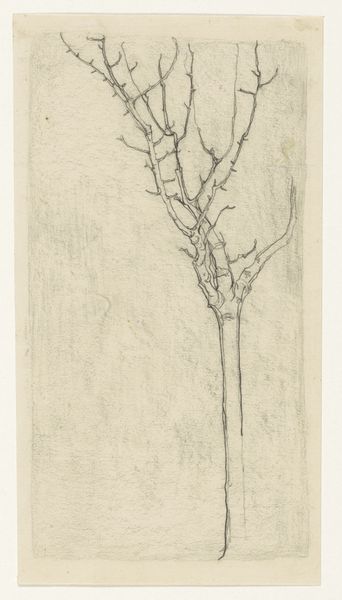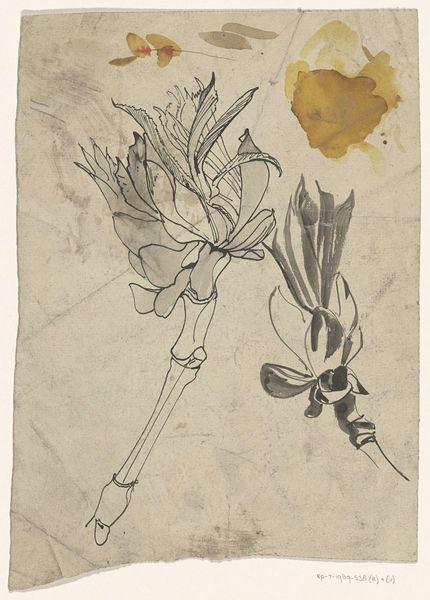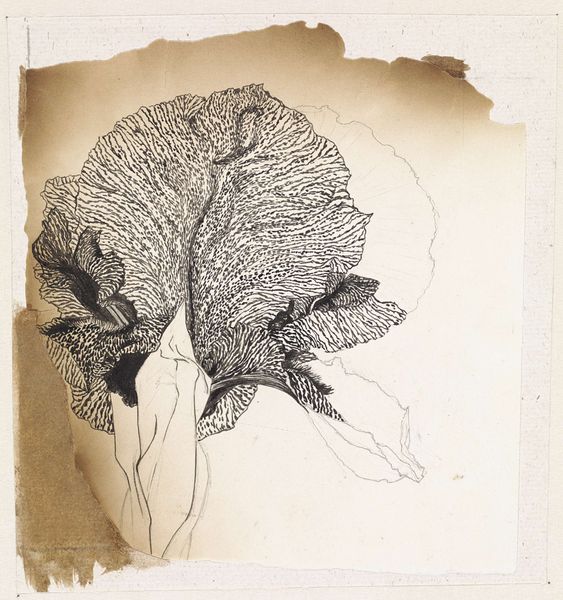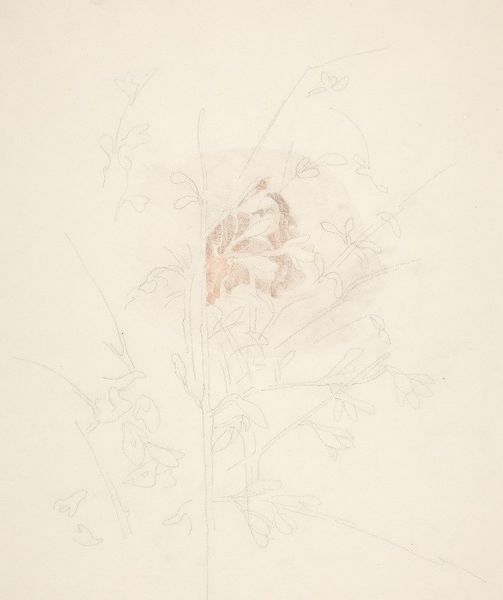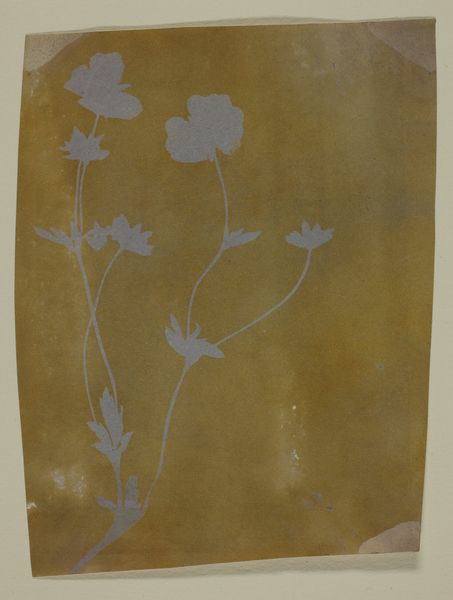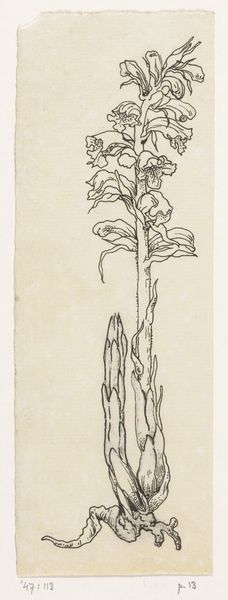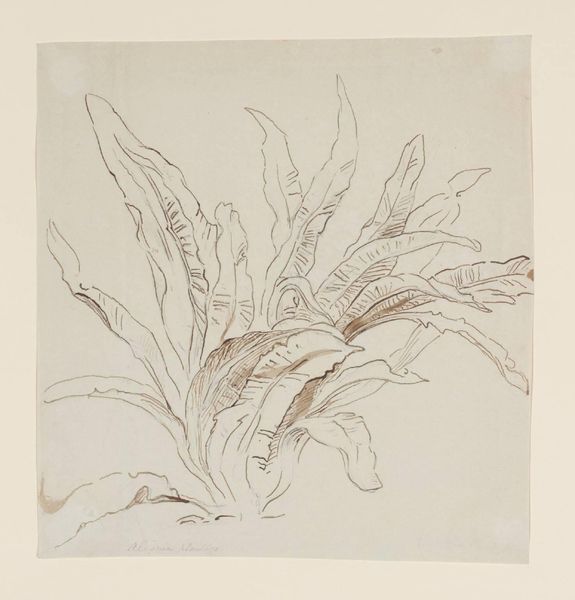
Design for a Stage Set at the Opéra, Paris 1830 - 1890
0:00
0:00
drawing, pencil
#
drawing
#
landscape
#
pencil
#
academic-art
Dimensions: Irregular sheet: 9 9/16 x 4 5/16 in. (24.3 x 10.9 cm)
Copyright: Public Domain
Curator: I find this study remarkably spare; a pencil drawing created between 1830 and 1890 by Eugène Cicéri. It's currently held at the Metropolitan Museum of Art, titled "Design for a Stage Set at the Opéra, Paris." Editor: My first impression is that it is an economical yet ethereal sketch. The grey paper seems to blend with the spare pencil work, making the theatrical elements almost disappear. Curator: The medium informs everything here. Note how the rough edges of the cut paper lend the stage design a sense of immediacy, highlighting the practical, workaday aspect of theater production beyond just grand performance. Editor: And what does that mean to its intended audience? The Paris Opéra, a symbol of cultural authority, displaying works based on utilitarian purposes? It pulls back the curtain on the spectacle, no? Is it critiquing or simply showcasing the craft of theater design? Curator: Exactly. It draws our attention to the labor and process behind constructing an illusion. We see the quick strokes of the pencil and the physical cutting away of the paper. Think about how Cicéri was instrumental in implementing gas lighting and other modern inventions on stage—this work presents how such material changes redefined theatrical experiences and the social functions that those new experiences helped to forge. Editor: True. The application of such techniques really re-shaped public spectacle in Paris and abroad. This landscape form, clearly an artificial construct, evokes feelings of fabricated romance. Yet, viewing it outside of its original intent gives us insight into performance design as its own discipline with an aesthetic merit. It really is an unusual item that bridges between entertainment and craftsmanship. Curator: Indeed, it prompts consideration of how artistic skills translate from academic drawing into industrialized creative output. Editor: Ultimately, appreciating works like this allows one to peek into a cultural institution and grasp that it is the labor of artisans like Cicéri that helps realize cultural and theatrical fantasies.
Comments
No comments
Be the first to comment and join the conversation on the ultimate creative platform.
